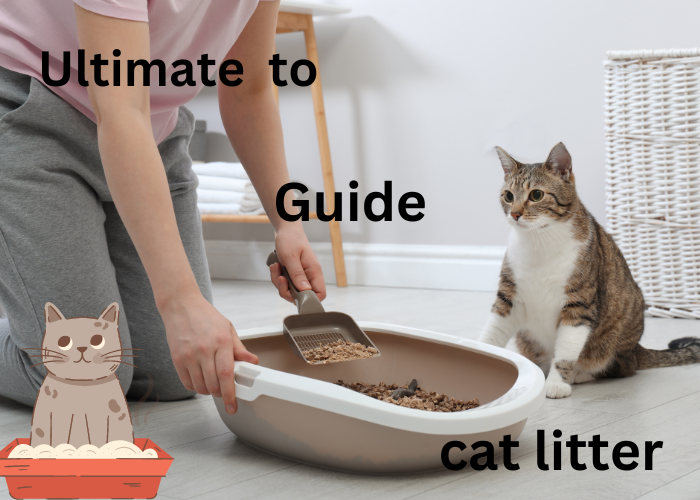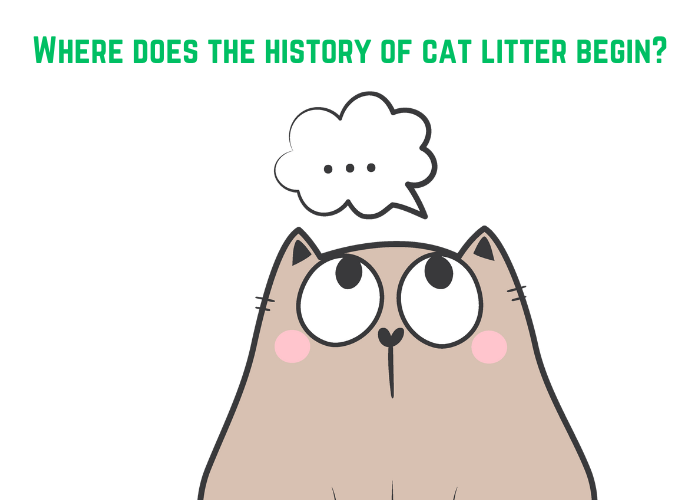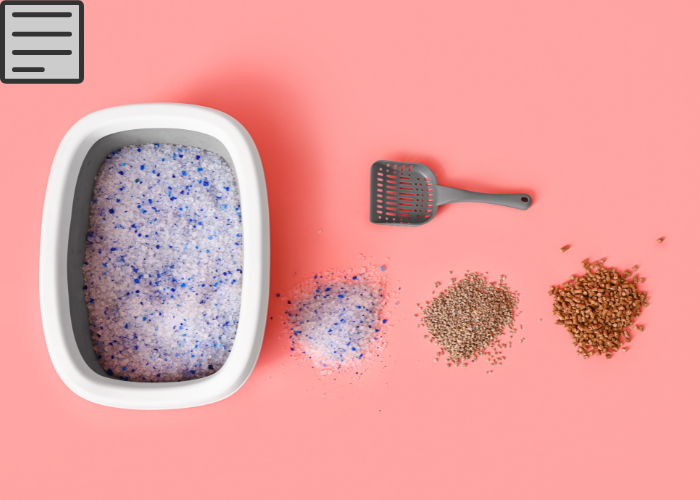In this ultimate guide about cat litter by PurrfectInsights, we dive into the fascinating world of cat litter, uncovering everything you need to know to make the cat litter use easy for you and your cat.

From its beginnings to the innovative options available today, we’ll explore the evolution of cat litter, discuss the best types for different needs, and provide expert tips on maintaining a clean, odor-free environment.
So whether you’re a seasoned cat owner or a new pet parent, this comprehensive guide will equip you with all the insights and knowledge to make informed choices for your furry companion.
Table of Contents
Importance of Choosing the Right Cat Litter
If you are a cat owner or going to be one remember one thing buying and finding the right cat litter that is suitable for both of you and your cat. The right litter can significantly impact your cat’s health, comfort, and overall well-being. Additionally, it can make maintaining a clean and odor-free home much easier for you. Here are a few key reasons why selecting the right cat litter is so important:
- Health and Hygiene: The right cat litter helps to control odors, absorb moisture, and reduce bacteria growth. Some litters are formulated to be dust-free, which is beneficial for both cats and humans, particularly those with respiratory issues.
- Cat Comfort: Cats are known to be finicky creatures, and their litter preferences can vary widely. Some cats prefer certain textures or scents, and the wrong choice can lead to litter box aversion, causing your cat to eliminate outside the box.
- Ease of Maintenance: Different types of litter offer varying levels of clumping ability and odor control. Finding a litter that is easy to clean and manage can save you time and keep your home smelling fresh.
- Environmental Impact: With growing concerns about sustainability, many pet owners are looking for eco-friendly cat litter options. Biodegradable and natural litter can be a more sustainable choice compared to traditional clay-based products.
For more insights on choosing the right cat litter, you can check out PetMD’s guide on cat litter.
Brief History of Cat Litter
The concept and the history of cat litter is relatively modern, with its origins tracing back to the mid-20th century. Here’s a brief look at how cat litter evolved over the years:

- Early Days: Before the invention of commercial cat litter, people often used sand, ashes, or soil in their cat litter boxes. These materials were not very effective at controlling odor or moisture, making them less than ideal for indoor use.
- The Invention of Clay Cat Litter: In 1947, Edward Lowe, an entrepreneur from Michigan, revolutionized cat care by introducing the first commercial cat litter made from absorbent clay. This product was a game-changer because it effectively absorbed moisture and controlled odors much better than sand or ashes. Lowe’s brand, “Kitty Litter,” quickly became popular, and the name itself became synonymous with cat litter.
- Advancements in Cat Litter Technology: Over the decades, various innovations have improved cat litter’s functionality and convenience. Clumping clay litter, introduced in the 1980s, allowed for easier cleaning as it formed solid clumps when wet. This made it simple to scoop out waste, keeping the litter box cleaner for longer periods.
- Modern Options: Today, the market offers a wide range of cat litter, including silica gel crystals, biodegradable options made from corn, wheat, and recycled paper, and natural wood-based litter. These alternatives cater to different preferences, such as low-dust formulations, enhanced odor control, and eco-friendly materials.
For a deeper dive into the history of cat litter, you can visit Catster’s article on the history of cat litter.
Choosing the right cat litter not only keeps your cat happy and healthy but also makes your life as a pet owner much easier. With the variety of options available today, you can find a product that fits your cat’s needs and aligns with your lifestyle preferences.
Types of Cat Litter
When it comes to choosing cat litter, pet owners are faced with a variety of options. Each type of cat litter has its unique characteristics, advantages, and disadvantages. Understanding these can help you make an informed decision that best suits your cat’s needs and your lifestyle.

Clay Cat Litter
- Clumping Clay Litter: This type is made from bentonite clay, which forms solid clumps when it comes into contact with moisture. These clumps are easy to scoop out, keeping the rest of the litter box clean.
- Pros: Easy to clean, excellent odor control, widely available.
- Cons: Can be dusty, not environmentally friendly, heavy to carry.
Here are some clumping clay cat litter.


